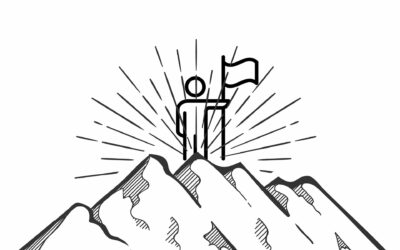Newton’s first law of motion, the law of inertia, tells us that a body at rest will remain at rest and a body in motion will stay in motion unless acted upon by an outside force. Inertia is defined as the property of an object to resist changes in its state of motion.
We, too, are subject to the laws of inertia. We, too, are bodies at rest or in motion. And inertia inhibits our ability to take risks because it resists our ability to change. Risk-taking is about starting something new or stopping something we’ve grown comfortable with. In the human law of inertia, risk-taking is the force that moves us out of our routine or comfort zone.
To risk means to change. Risk-taking causes the usual discomfort that accompanies change, inertia—the cozy comfort of the status quo—is often a more attractive choice. To overcome its debilitating effects, and to help ready themselves for the risk, risk-takers need to learn to defy inertia.
Risk-taking as a Vehicle of Change
Through risk-taking, we move beyond the comfort of our current condition and overcome inertia. While sometimes this movement is taken through physical activity. Such as leaving the safety of the ground to scale the face of El Capitan. Other times the movement entails more of a cerebral shift. Like converting to a new political or religious belief system, for example.
Whether physical or intellectual, the risk is a vehicle that moves us from where we are to where we want to be, and you simply can’t get from here to there without movement.
As a general rule, the greater the distance between your current reality(here) and the destination to which the risk will carry you(there), the more substantial the risk. And the hard truth is, the bigger the gap between here and there, the more energy, discomfort, and sacrifice will be required to overcome inertia and take the risk.
Risk is a vehicle that moves us from where we are to where we want to be.
Risk-taking is hard work. As the path of change, risk-taking is the hard way out of our current circumstances, the way of initiative. Unfortunately, there is an inverse relationship between initiative and enormity. Thus, the more daunting the risk, the harder it is to muster up the energy to face the challenge, and the easier it is to opt-out. We feel dwarfed by the risk’s bigness and we think we simply don’t have the physical or intellectual wherewithal for the undertaking.
Perceived Barriers
For example, many people have shied away from starting their own business not because of the financial commitment, but because they were convinced that the volume of paperwork would be too vexing. While turning away from the hard work of a large risk is understandable, turning away from small risks makes less sense.
In these instances, the reluctance to risk is a function of habit—the behavioral expression of inertia. I see this a lot in my executive coaching practice. Often the smallest risks (in the form of behavioral change) are often met with resistance.
I once coached a highly successful, but plateaued, senior executive who, to the annoyance of both his wife and his employees, meticulously planned every waking moment of his life. He knew his rigidity was becoming more than a barrier to career progress, it was hampering his ability to enjoy life as well. More than one person had told him he needed to “lighten up.”
The reluctance to risk is a function of habit—the behavioral expression of inertia.
First, he related all the ways in which his overly structured behavior was blocking his personal and professional growth. Then we began brainstorming how he could increase the amount of spontaneity in his life. Seeing the need to start slow, I made a simple suggestion that on the weekends he begin taking off his wristwatch. This would allow him to be unrestricted by time so he could begin experimenting with living less rigidly. Meeting my suggestion with a mixture of shock and characteristic rigidity, he replied, “Good God, I could never do that!”
Defying Inertia
Risk-taking requires being alert to the effects of inertia in all its active and inactive forms. Our really big risks, require inertia-defying exertion. They require pulling up the roots of our habits, putting down the television remote, and springing into action.
Is there a big (or small) risk you’ve been hesitant to take the leap on? What would it take to apply the laws of inertia and get moving today?
This post is based on an expert from the book Right Risk: 10 Powerful Principles for Taking Giant Leaps with Your Life.



